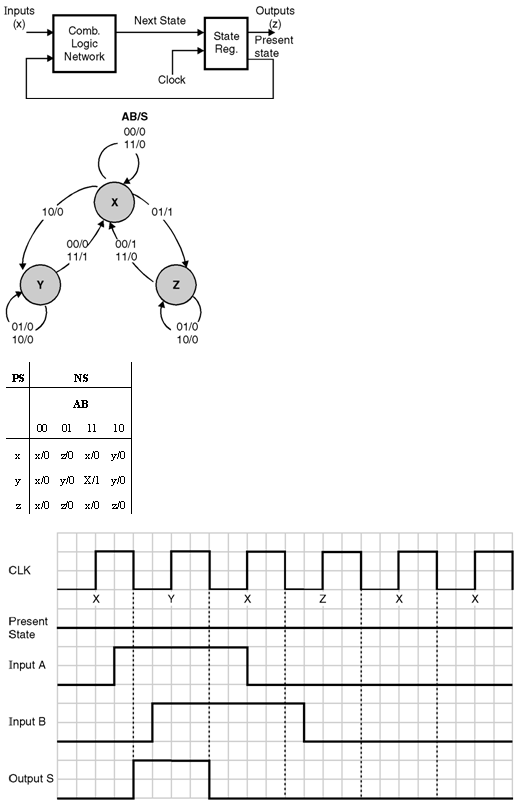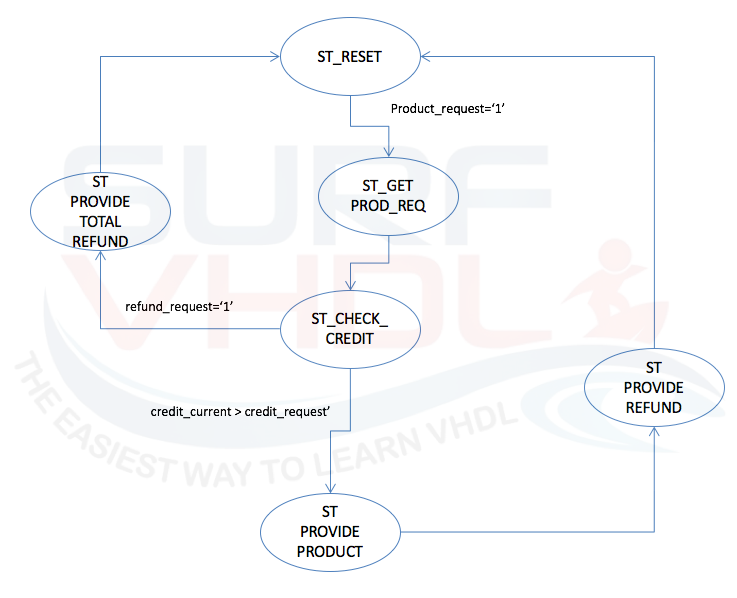
- Serial Adder Circuit
- Vhdl Code For Serial Adder Using Finite State Machine Design
- Parallel Adder
- Vhdl Code For Serial Adder Using Finite State Machine Calculator
VHDL Coding of FSM: VHDL contains no formal format for finite state machines. A state machine description contains, a state variable, a clock, specification of state transitions, specification of outputs and a reset condition. The clock and reset are to be declared in a PROCESS statement. The output is specified using any concurrent statement. Assume that i want to add 4 signals a,b,c,d and i want to add them using adder2 which adds to signals only.and i want to implement them in adder tree format so in the first state a, and b will be added and saved at signal y and c and d will be added as well and saved at signal z then in the next state y and z will be added and and the result will be at the the output x. Aug 25, 2018 A finite-state machine (FSM) is a mechanism whose output is dependent not only on the current state of the input, but also on past input and output values. Whenever you need to create some sort of time-dependent algorithm in VHDL, or if you are faced with the problem of implementing a computer program in an FPGA, it can usually be solved.
Code for serial adder, vhdl code for serial adder using moore type fsm, basic verilog umass amherst, verilog examples useful for fpga amp asic synthesis, n bit adder design in verilog fpga4student com, finite state machine fsm coding in vhdl vlsi encyclopedia, state machines upb, vlsi verilog carry select adder using. Nov 01, 2017 In this post, I have used a similar idea to implement the serial adder. Though I have used behavioral level approach to write my code, it should be straight forward to understand if you have the basics right. VHDL CODE: library ieee; use ieee. All;-serial adder for N bits. Note that we dont have to mention N here.

Serial Adder Circuit
This page consists of design examples for state machines in VHDL. A state machine is a sequential circuit that advances through a number of states. The examples provide the HDL codes to implement the following types of state machines:
- 4-State Mealy State Machine
The outputs of a Mealy state machine depend on both the inputs and the current state. When the inputs change, the outputs are updated without waiting for a clock edge.
- 4-State Moore State Machine
Vhdl Code For Serial Adder Using Finite State Machine Design

The outputs of a Moore state machine depend only on the present state. The outputs are written only when the state changes (on the clock edge).
- Safe State Machine
This example uses the syn_encoding synthesis attribute value safe to specify that the software should insert extra logic to detect an illegal state and force the state machine's transition to the reset state.
Parallel Adder
- User-Encoded State Machine
This example uses the syn_encoding synthesis attribute to apply specific binary encodings to the elements of an enumerated type.
Download the files used in this example:

Each zip download includes the VHDL file for the state machine and its top level block diagram.
Related Links
Design Examples Disclaimer
Vhdl Code For Serial Adder Using Finite State Machine Calculator
These design examples may only be used within Intel devices and remain the property of Intel Corporation. They are being provided on an “as-is” basis and as an accommodation; therefore, all warranties, representations, or guarantees of any kind (whether express, implied, or statutory) including, without limitation, warranties of merchantability, non-infringement, or fitness for a particular purpose, are specifically disclaimed. Intel expressly does not recommend, suggest, or require that these examples be used in combination with any other product not provided by Intel.